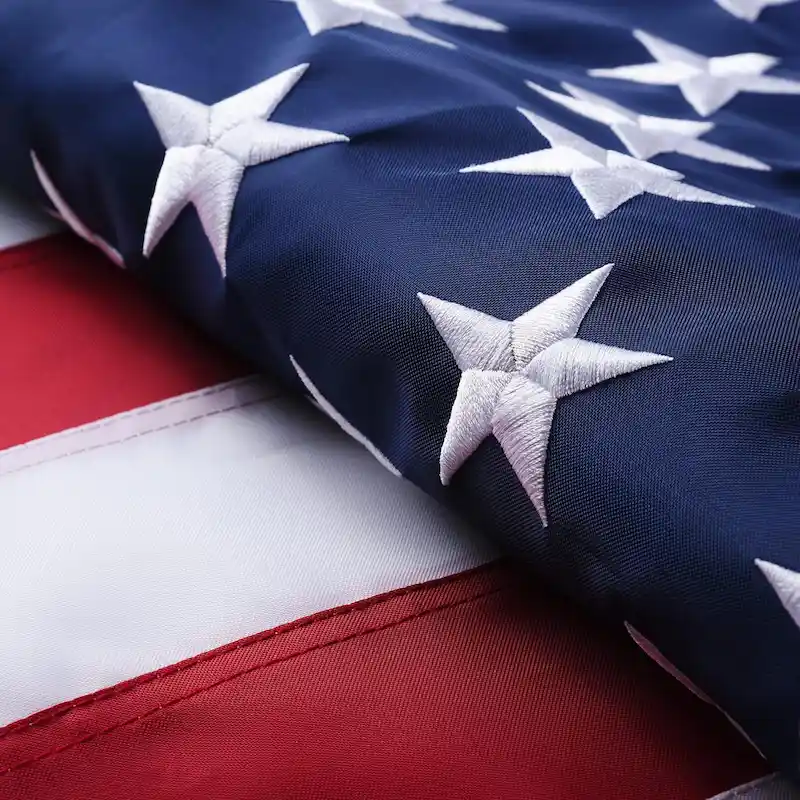Wyoming’s flag, featuring a bison silhouette with the state seal on a blue field bordered in white and red, represents frontier heritage, unity, and resilience. Designed in 1916 by Verna Keays, it remains one of the most distinctive state flags in the U.S.
Knowledge Graph — Wyoming State Flag
| Node | Value | Notes & Links |
|---|---|---|
| Definition | A bison silhouette bearing the state seal on a blue field with white and red borders. | Known as the Bison Flag. |
| Origin | Selected through a Daughters of the American Revolution contest in 1916. | Designer: Verna Keays. |
| Adoption | Officially adopted on January 31, 1917. | Source: Wikipedia. |
| Uses | Government, schools, civic events, and cultural symbolism. | Shop: vicdria WY Flags |
| Design Elements | Bison, state seal, red outer border, white inner border, blue field. | Colors reflect U.S. flag symbolism. |
| Symbolism | Bison = wildlife & strength; Seal = government & industry; Red = Native blood & sacrifice; White = purity; Blue = sky & justice. | See: Britannica. |
Respect note: The bison is a protected symbol of frontier heritage — always reproduce the design accurately.
Style & Composition
| Element | Details |
|---|---|
| Field | Deep blue rectangle symbolizing sky, freedom, and justice. |
| Borders | White inner border (purity & uprightness) surrounded by a red border (Native heritage and sacrifice). |
| Bison | Central white bison silhouette, symbol of wildlife, strength, and western identity. |
| State Seal | Placed within the bison silhouette, representing government authority, agriculture, and mining industries. |
| Ratio | Commonly 2:3, standardized across official and commercial production. |
Symbolism & Meanings
- Bison: Icon of the American West, resilience, and frontier life.
- Seal: Represents Wyoming’s industries (livestock, mining, agriculture) and governance.
- Red: Honors Native American heritage and the sacrifices of pioneers.
- White: Symbol of purity and uprightness.
- Blue: Evokes the wide Wyoming skies and ideals of justice.
Historical Origin
In 1916, the Wyoming chapter of the Daughters of the American Revolution held a design contest for a new state flag. The winning design was created by Verna Keays, a recent art graduate. Her design placed the state seal on a white bison against a blue field with red and white borders.
After slight modifications to the seal placement, the flag was officially adopted by the Wyoming State Legislature on January 31, 1917. It has remained unchanged for over a century, representing the enduring spirit of the state.
Uses & Etiquette
The Wyoming state flag is displayed at the State Capitol, schools, government buildings, and public ceremonies. It also features prominently in tourism materials and is popular on apparel and merchandise.
Etiquette: When flown with the U.S. flag, the national flag must occupy the position of highest honor. Care should be taken not to distort the bison silhouette or state seal in commercial reproductions.
People Also Ask — Quick Answers
What animal is on the Wyoming state flag?
A white bison silhouette, symbolizing strength and wildlife heritage.
Why is the state seal inside the bison?
The seal represents government authority and Wyoming’s major industries, placed within the bison to unify natural and civic identity.
Who designed the Wyoming flag?
Verna Keays designed the flag in 1916; it was officially adopted in 1917.
What do the red and white borders mean?
Red symbolizes sacrifice and Native heritage; white symbolizes purity and uprightness.


